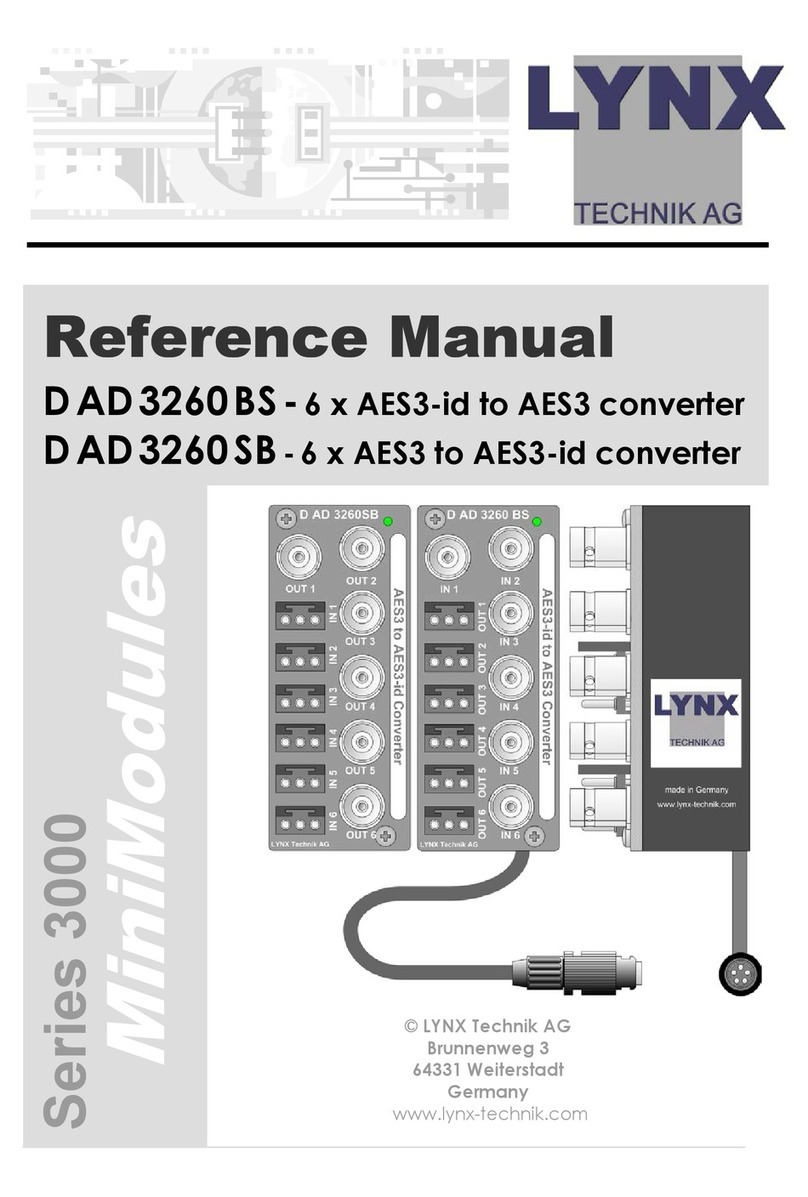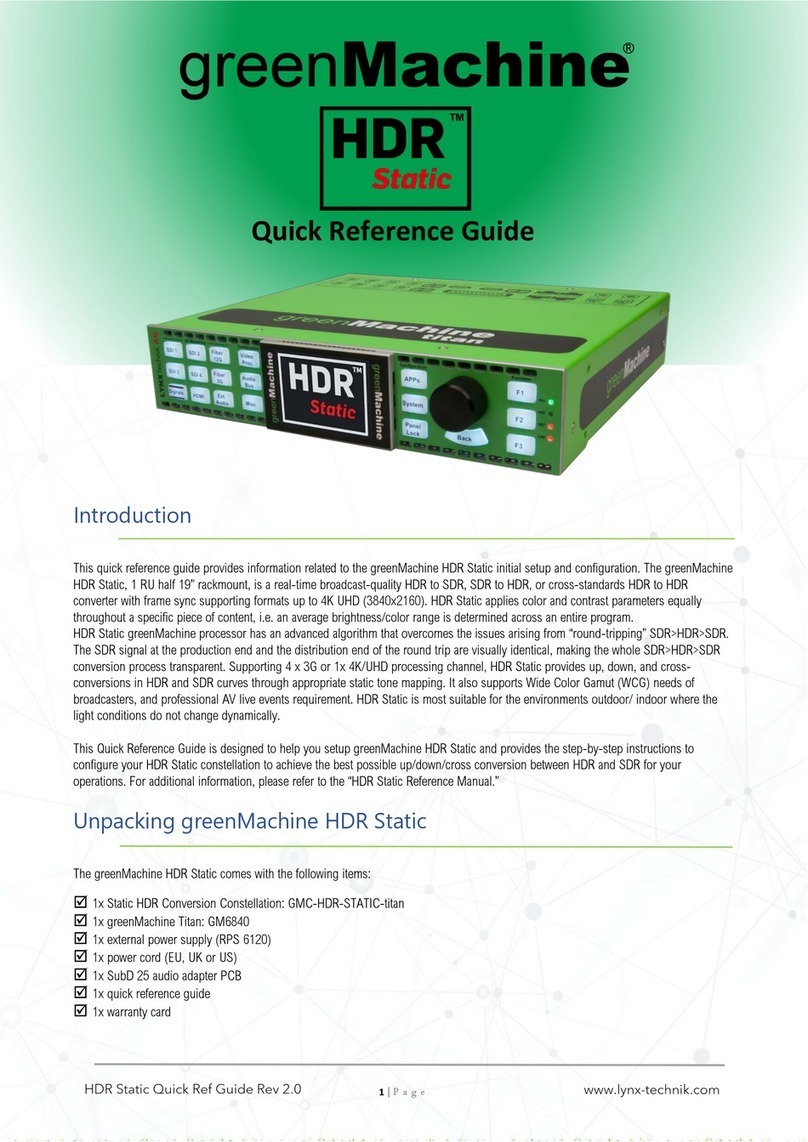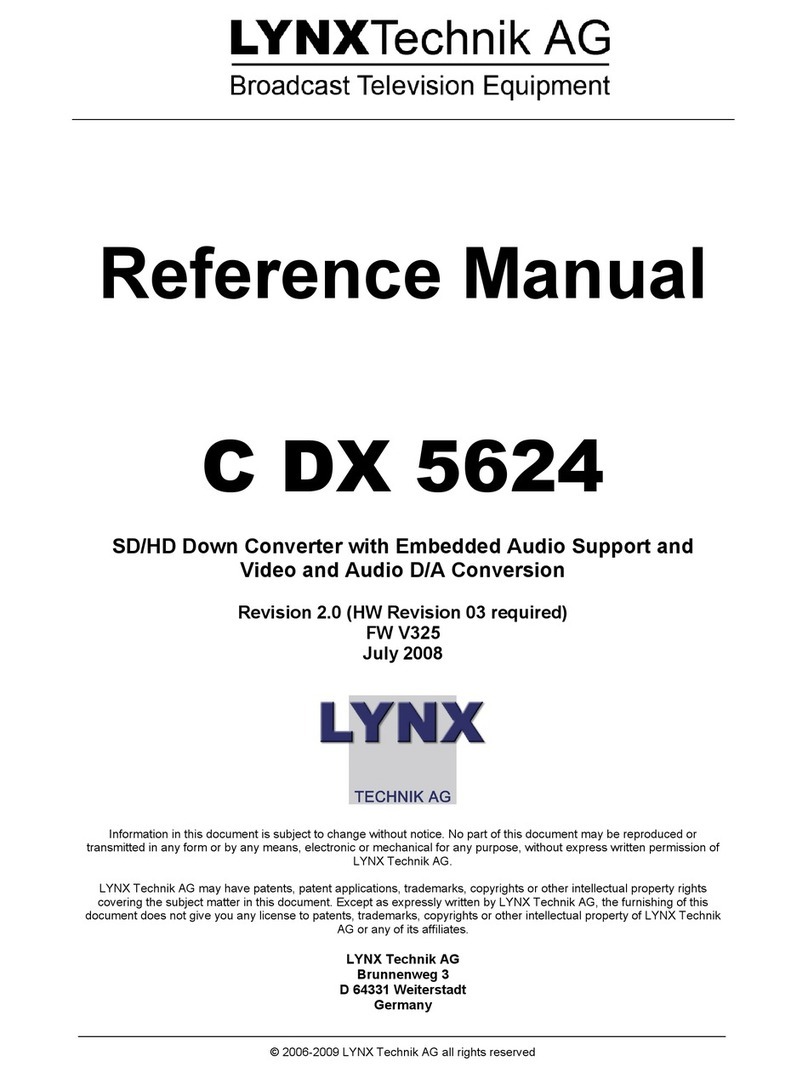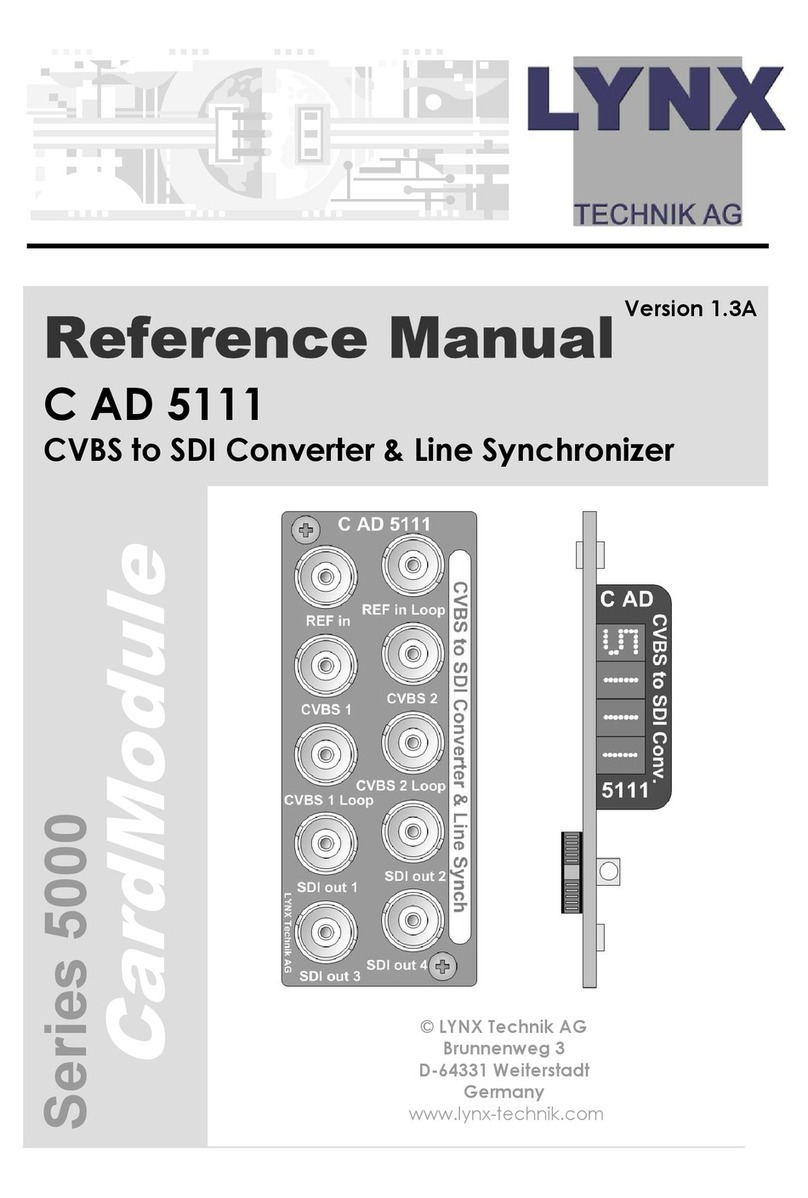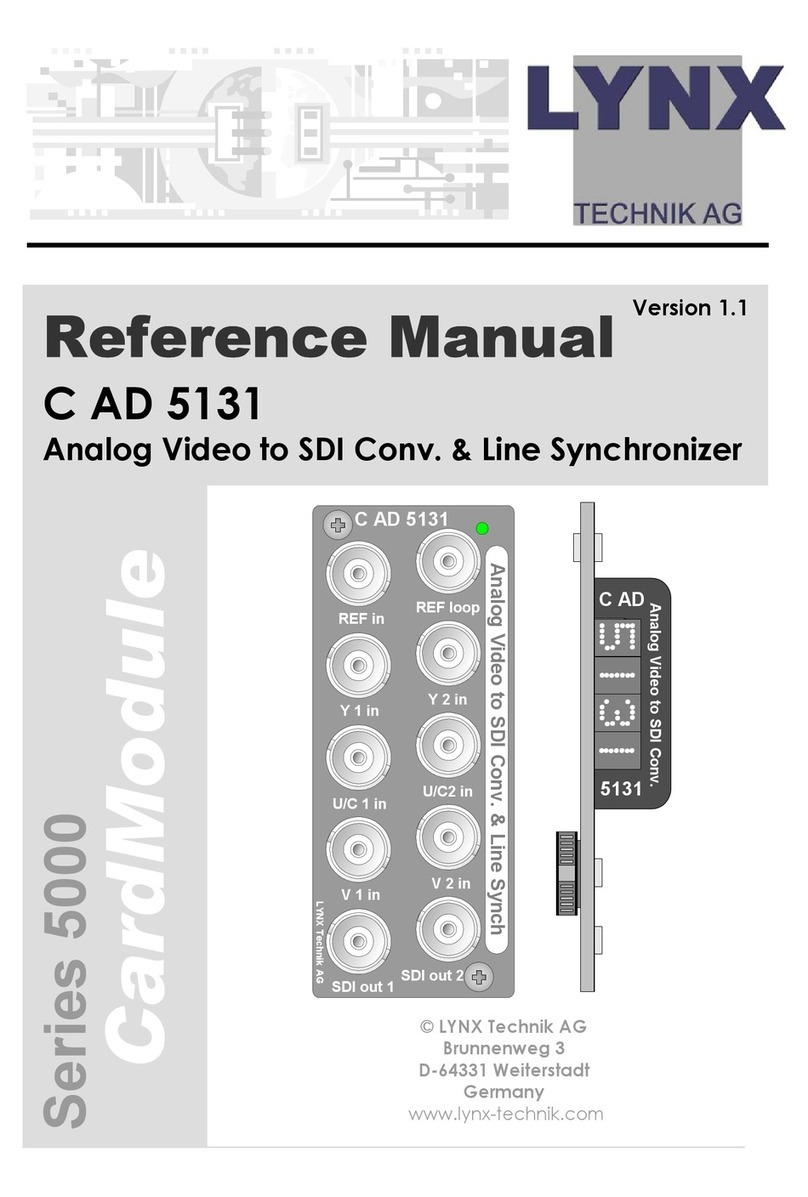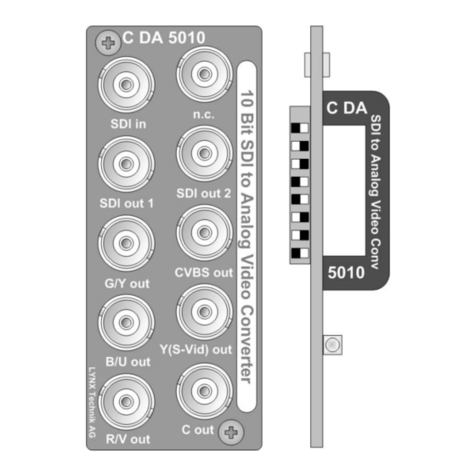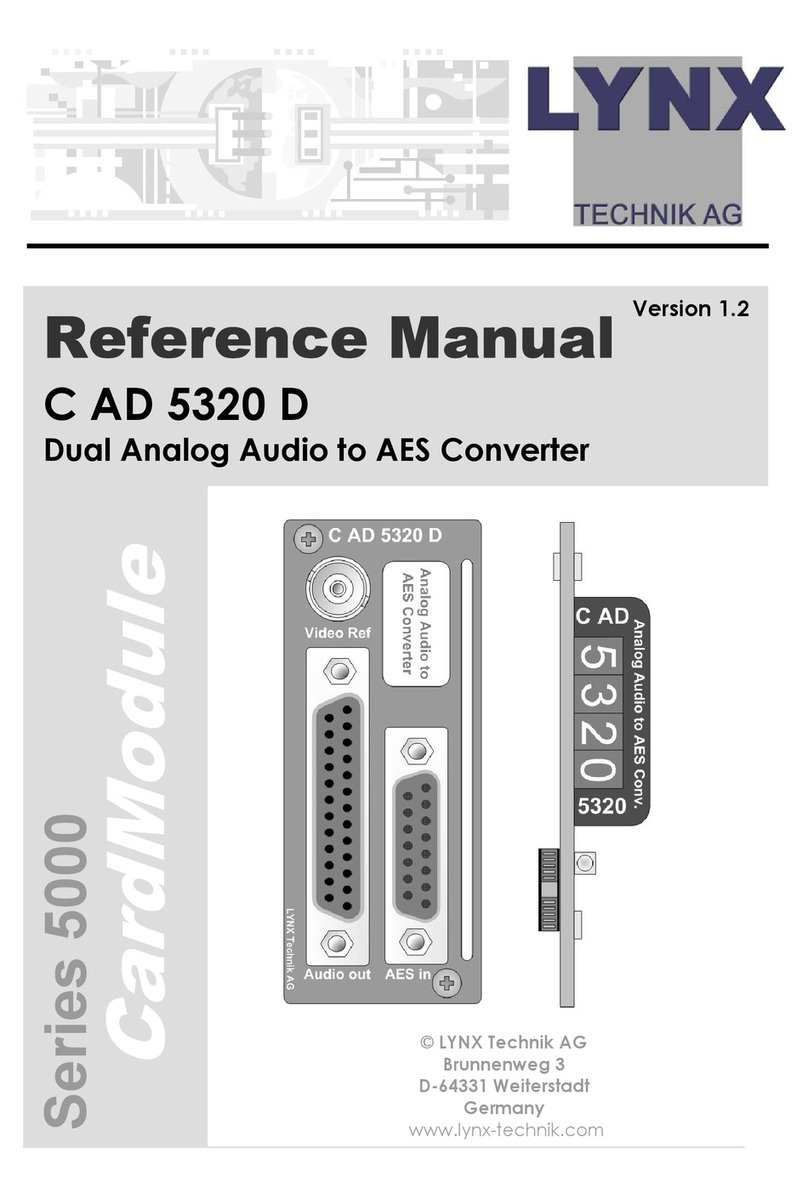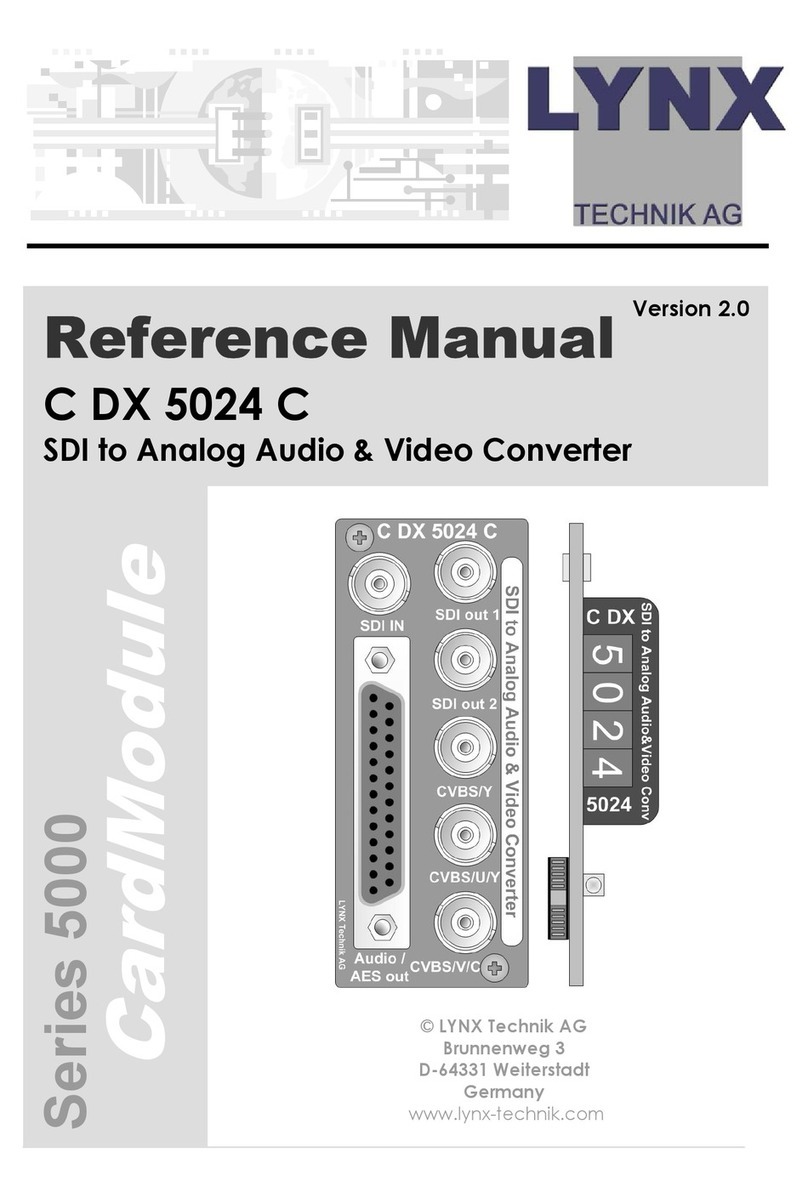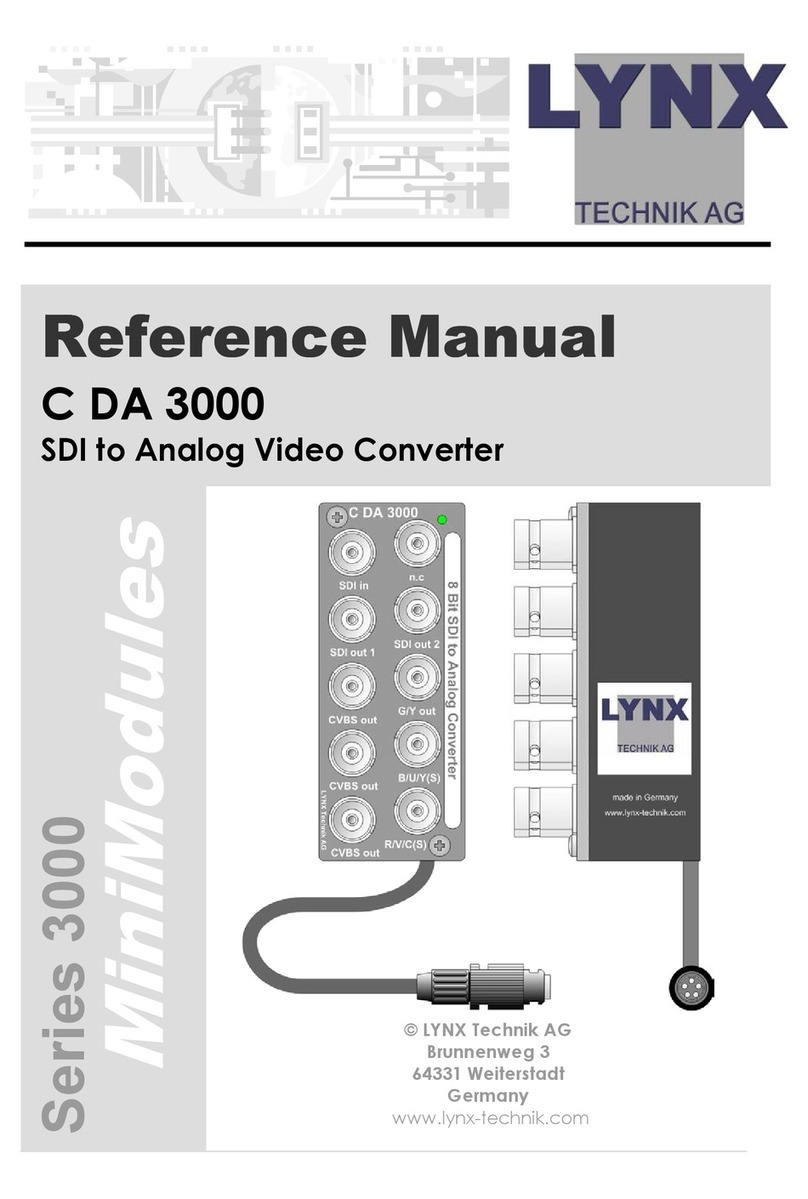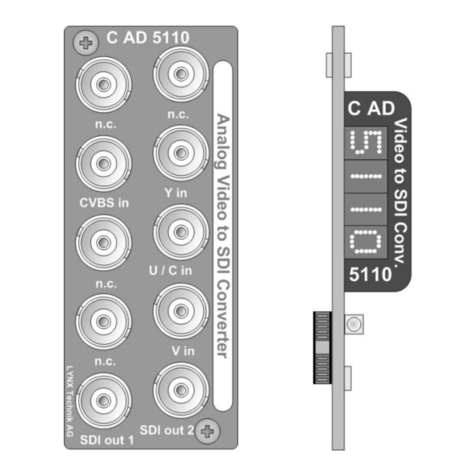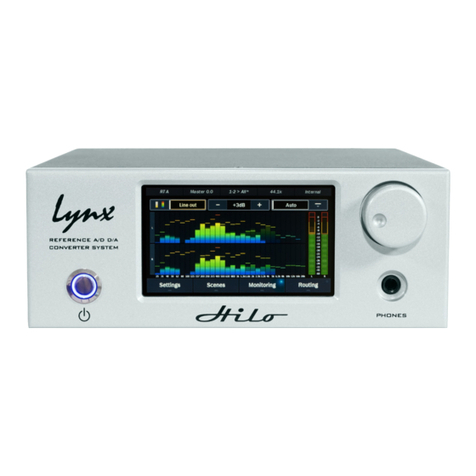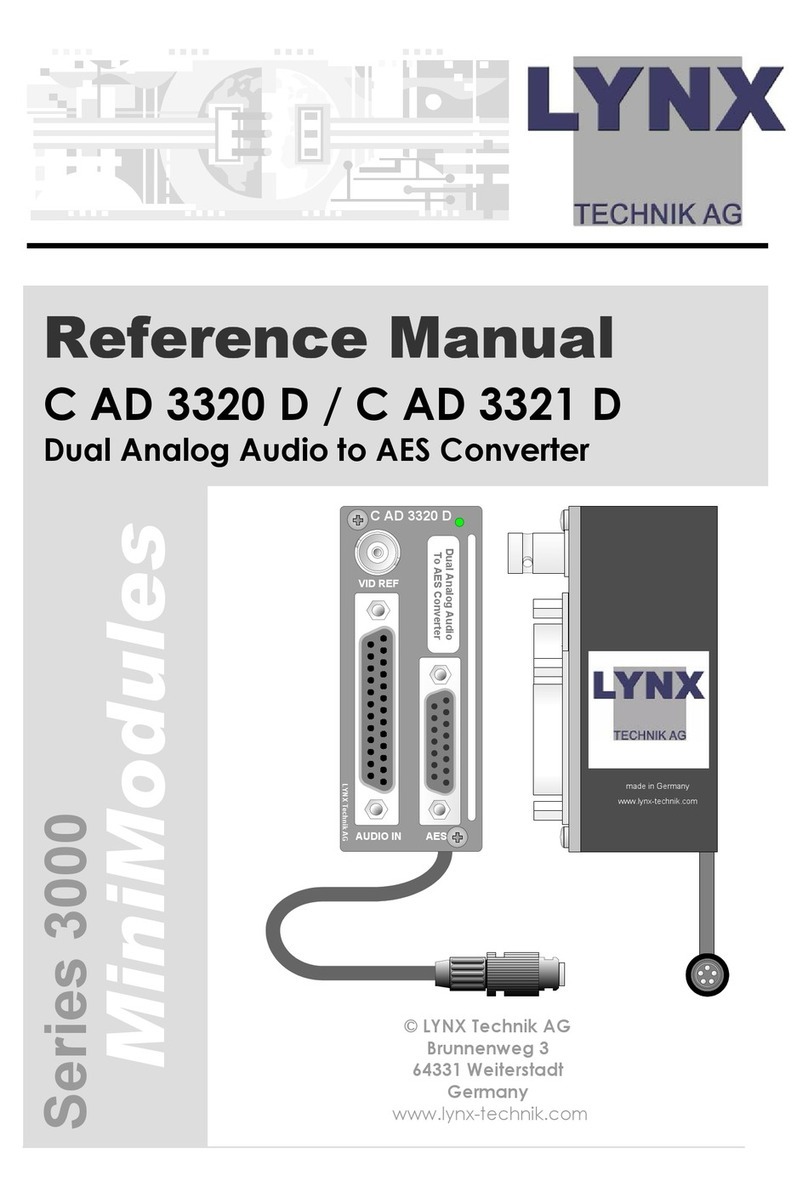
P VD 5660 Reference Manual. Rev 1.3
Page 3 of 50
FIRMWARE OPTIONS.................................................................................................................. 21
Second Input Option (OC-5660-SCND).................................................................................... 21
User Setting with GPI Control (OC-5660-USET)...................................................................... 21
Metadata Option (OC-5660-META) .......................................................................................... 21
Down Conversion Option (OC-5660-DWN) .............................................................................. 22
4:3 Letterbox......................................................................................................................... 22
4:3 Center Cut....................................................................................................................... 22
4:3 Stretch to Fill................................................................................................................... 22
Up/Down/Cross Conv. Option (OC-5660-UPXD)...................................................................... 23
Down conversion .................................................................................................................. 23
Up Conversion...................................................................................................................... 23
16:9 Center Cut ................................................................................................................ 23
16:9 PillarBox.................................................................................................................... 23
16:9 Stretch to Fill............................................................................................................. 23
Cross Conversion...................................................................................................................... 24
Image size and Positioning....................................................................................................... 24
COLOR SPACE CONVERSION................................................................................................... 24
SETTINGS AND CONTROL......................................................................................................... 25
Multi Function Switch ................................................................................................................ 25
Using the Local Display Menus................................................................................................. 25
Menu Structure.......................................................................................................................... 26
LED STATUS INDICATORS......................................................................................................... 27
SDI 1 Status LED 1................................................................................................................... 27
SDI 2 Status LED 2................................................................................................................... 27
Ref Status LED 3....................................................................................................................... 27
ALARM LED.............................................................................................................................. 27
CONTROL SYSTEM GUI..............................................................................................................28
Main Tab ................................................................................................................................... 29
REF in Select........................................................................................................................ 29
Signal Routing....................................................................................................................... 29
Test Patterns......................................................................................................................... 29
Video Proc Tab.......................................................................................................................... 30
General Video Settings......................................................................................................... 30
External Reference Source .............................................................................................. 30
Frequency Pre-select ....................................................................................................... 30
Device Status.................................................................................................................... 31
SDI 1 and SDI 2 Inputs (Input 2 is optional)..................................................................... 31
Video Converter 1 and 2 (OC-5660-DWN option)............................................................ 31
Converter Source......................................................................................................... 32
Down Converter Mode................................................................................................. 32
SDTV Aspect Ratio Converter Mode................................................................................ 32
16:9 to 4:3 Conversion................................................................................................. 32
4:3 to 16:9 Conversion................................................................................................. 32
HQ Scaler Tab........................................................................................................................... 32
High Quality Up and Cross Conversion (OC-5660-XUPD).............................................. 32
HQ Scaler Source ........................................................................................................ 33
Input Aspect Ratio........................................................................................................ 33
Output Format.............................................................................................................. 33
Conversion Mode......................................................................................................... 33
Input Cropping.............................................................................................................. 33
Output Cropping........................................................................................................... 33
Output Proc Tabs...................................................................................................................... 34

